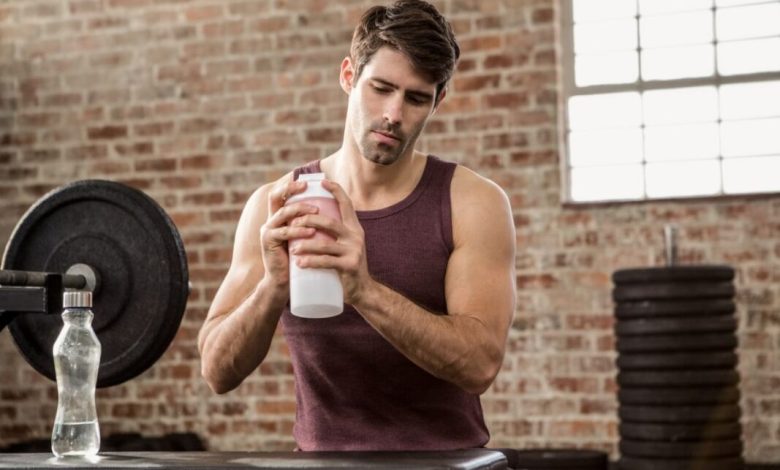The Dark Side of Protein Powders: Gym Bros Warned About Hidden Lead Risks

Protein powders are a staple in nearly every gym enthusiast’s routine. From muscle building and recovery to meal replacement and weight management, they’ve become synonymous with “fitness fuel.” But what if that post-workout shake—meant to support your health—is actually laced with dangerous toxins?
Recent studies have sounded the alarm: many popular protein powders contain alarming levels of heavy metals such as lead, arsenic, cadmium, and mercury. For gym-goers who swear by their daily scoop, this revelation is more than unsettling—it’s a serious wake-up call.
In this in-depth investigation, we uncover the hidden lead risks in protein powders, explore how these contaminants enter your supplements, and reveal the best ways to protect yourself from toxic exposure while still meeting your fitness goals.
1. The Protein Powder Boom: Why Everyone’s Shaking Things Up
Over the past decade, protein powder has evolved from a niche bodybuilding supplement to a mainstream health essential. Marketed as the ultimate shortcut to lean muscle, weight loss, and overall wellness, it’s no surprise that the global protein supplement market exceeded $25 billion in 2024 and continues to grow.
Protein powders are everywhere—lining store shelves, filling influencer feeds, and showing up in smoothie bars. They come in a variety of types:
- Whey protein – the most popular, derived from milk.
- Casein protein – slower-digesting, also dairy-based.
- Plant-based proteins – made from peas, rice, soy, hemp, or pumpkin seeds.
- Collagen protein – derived from animal connective tissues, marketed for skin and joint health.
While these powders promise health benefits, most users never stop to question what else might be lurking in their tub.
2. The Shocking Truth: Lead and Heavy Metals Found in Popular Brands
In 2018 and again in 2020, the Clean Label Project, a nonprofit watchdog organization, tested 134 of the best-selling protein powders for contaminants. The results were disturbing:
- 75% contained measurable levels of lead.
- 55% contained BPA (bisphenol-A), a harmful industrial chemical.
- Some plant-based proteins contained up to 25 times the allowed limit of lead compared to other food products.
Even more alarming? Many of these contaminated powders were labeled “organic,” “all-natural,” or “non-GMO.”
Heavy metals like lead are not added intentionally; they typically enter the product during cultivation, processing, or packaging. However, repeated daily use—even in small amounts—can lead to toxic accumulation in the body over time.
3. How Does Lead Get Into Protein Powder?
Most gym-goers assume that because a product is “clean” or “plant-based,” it’s automatically safe. Unfortunately, that’s not the case. Here’s how lead sneaks into your supplements:
a. Soil Contamination
Plants absorb minerals from the soil they grow in—including toxic heavy metals. In regions with polluted soil or industrial runoff, crops like peas, rice, and hemp can take up lead and arsenic through their roots.
b. Manufacturing and Processing
During production, metal equipment, industrial dryers, or contaminated water sources can introduce additional heavy metals into the product.
c. Packaging and Storage
Low-quality plastic containers and storage materials may leach chemicals such as BPA or phthalates into the powder, especially when exposed to heat.
d. Cross-Contamination
Facilities that handle multiple supplement types—especially those with poor quality control—can contaminate protein powder batches unintentionally.
4. What Lead Does to Your Body: The Hidden Danger
Lead exposure is no minor concern—it’s a toxic heavy metal with no safe level of exposure, according to the World Health Organization (WHO).
Once in the body, lead can accumulate in bones, blood, and soft tissues. Over time, this can cause a range of health problems, including:
- Neurological damage: memory loss, headaches, fatigue, and irritability.
- Kidney and liver dysfunction: as the body struggles to filter toxins.
- Hormonal disruption: impacting testosterone and fertility.
- Cardiovascular issues: increased blood pressure and heart strain.
- Bone demineralization: since lead competes with calcium in the body.
For athletes and gym enthusiasts, lead toxicity is particularly concerning. Chronic exposure can blunt muscle recovery, decrease energy levels, and hinder performance—undermining the very goals that drive people to use protein supplements in the first place.
5. Why Gym Bros Should Care: The Silent Saboteur of Gains
Imagine training hard, eating clean, and drinking your favorite protein shake every day—only to realize that your so-called health drink is slowly poisoning you.
That’s the reality for many unaware gym-goers. The “clean eating” and “fit lifestyle” movement often emphasize macros and muscle growth, but rarely talk about the purity of supplements.
Here’s why fitness enthusiasts should take this seriously:
a. Cumulative Exposure
A single serving might contain only trace amounts of lead, but daily use for months or years can lead to dangerous accumulation.
b. Increased Consumption
Gym-goers often take two to three servings a day, multiplying their exposure risk.
c. Nutrient Competition
Heavy metals interfere with the absorption of essential nutrients like zinc, magnesium, and iron—all critical for muscle recovery and hormone balance.
d. False Security in “Organic” Labels
Many assume “organic” equals “safe.” But even organic crops can absorb lead from contaminated soil, making certification meaningless in terms of heavy metal safety.
6. The Science Behind the Scare: What Studies Show
Let’s look at the research:
- A Consumer Reports investigation found that certain protein powders contained 3 micrograms of lead per serving—nearly the daily safe limit for adults.
- The FDA’s Tolerable Intake Level for Lead is 12.5 micrograms per day for adults, yet frequent protein supplement use can exceed that threshold easily.
- A 2020 Harvard study found that children and pregnant women consuming contaminated protein shakes faced higher risks of cognitive damage and developmental delays.
These findings suggest that what might seem like a harmless fitness supplement could, over time, contribute to serious health consequences.
7. Spotting Safe Protein Powders: What to Look For
Not all protein powders are toxic—but distinguishing safe brands requires careful attention. Here’s how to choose wisely:
✅ Check for Third-Party Testing
Look for certifications such as:
- NSF Certified for Sport
- Informed-Choice
- USP Verified
These ensure products are tested for heavy metals and contaminants.
✅ Review the Certificate of Analysis (COA)
Reputable brands provide COAs detailing exact levels of contaminants. If a company refuses to share theirs, that’s a red flag.
✅ Prefer Whey from Grass-Fed Sources
Whey derived from grass-fed cows tends to have lower heavy metal content compared to plant-based powders sourced from contaminated soils.
✅ Choose Single-Source Proteins
Blends often increase contamination risk due to multiple ingredient origins.
✅ Avoid Artificial Additives
Artificial sweeteners, colorants, and fillers can mask contamination or add chemical burden to your body.
8. The Plant-Based Problem: Why “Vegan” Isn’t Always Safer
While plant-based protein powders have gained popularity among health-conscious and vegan consumers, studies consistently show they contain higher levels of heavy metals than animal-based options.
This doesn’t mean you should avoid them entirely—but it does mean you need to be more selective.
- Rice protein is notorious for arsenic accumulation due to the way rice absorbs minerals from flooded paddies.
- Pea and hemp proteins can absorb lead and cadmium depending on the soil.
- Blended plant proteins often combine several sources, compounding the contamination risk.
If you prefer plant-based options, look for brands that test every batch and publish the results online.
9. Detoxifying Your Routine: How to Protect Yourself
If you suspect your protein powder may be contaminated—or simply want to play it safe—here are steps to minimize your exposure and protect your health:
1. Rotate Protein Sources
Don’t rely solely on one type of protein powder. Alternate between food-based proteins like eggs, fish, lentils, and quinoa.
2. Use Whole Foods First
Aim to get at least 70% of your daily protein from natural sources. Powders should supplement your diet—not replace it.
3. Hydrate Generously
Water helps flush out toxins and supports kidney function, especially important if you’ve been exposed to heavy metals.
4. Increase Antioxidant Intake
Foods rich in vitamin C, selenium, and zinc (like citrus fruits, spinach, and nuts) help reduce oxidative stress caused by heavy metals.
5. Try Detoxifying Herbs
Natural chelators such as cilantro, chlorella, and spirulina may help bind and eliminate metals from the body over time.
6. Get Blood Tests
If you regularly consume protein powders, consider testing for heavy metals annually. Early detection can prevent long-term damage.
10. Real Stories: When “Healthy” Supplements Turn Harmful
Several real-world cases have emerged where protein supplements caused unexpected toxicity:
- In 2022, a California man was diagnosed with lead poisoning linked to a contaminated plant protein blend.
- A 2019 case report documented kidney dysfunction in a young athlete who had been consuming multiple protein shakes daily for years.
- Independent testing of Amazon-sold protein powders found lead levels up to 10 micrograms per serving in certain “natural” brands.
These examples emphasize the importance of knowing what’s in your supplement tub.
11. Industry Response: Are Brands Taking Responsibility?
As awareness grows, some supplement companies have taken steps to clean up their products. Brands like Orgain, Naked Nutrition, and Garden of Life now publish batch-specific COAs and emphasize third-party testing.
However, the supplement industry remains loosely regulated under the Dietary Supplement Health and Education Act (DSHEA) of 1994, which does not require manufacturers to prove product safety before marketing.
This means the burden falls on consumers to investigate safety claims—a concerning reality for something consumed daily by millions.
12. What Experts Say
Dr. Mark Hyman, a renowned functional medicine expert, warns:
“The supplement industry is the Wild West. Many products marketed as clean and healthy are contaminated with metals and toxins that silently damage our health.”
Similarly, registered dietitian Lauren Armstrong emphasizes,
“It’s not about fearmongering—it’s about awareness. Protein powders can be safe, but consumers need to demand transparency and accountability from manufacturers.”
13. The Future of Clean Protein
The good news? Innovation is happening.
- Fermentation-based protein made in controlled environments eliminates soil contamination.
- Lab-grown proteins derived from precision fermentation may soon offer ultra-clean alternatives.
- Blockchain tracking in supply chains promises traceability from farm to shaker bottle.
These advancements could revolutionize how we view protein supplementation—making “clean” truly clean.
14. What You Can Do Right Now
To protect yourself and your gains, take these immediate steps:
- Audit your protein powder. Search online for third-party lab results or contact the company.
- Switch to trusted brands that publish full transparency reports.
- Diversify your protein intake—whole foods first, supplements second.
- Educate your gym community. Many “gym bros” are still unaware of this hidden danger.
- Stay updated. Follow credible organizations like ConsumerLab and Clean Label Project for the latest findings.
15. The Bottom Line: Don’t Let Lead Steal Your Gains
Protein powders were designed to help you build a stronger, healthier body—not expose you to toxins that quietly tear it down.
The dark side of the supplement industry lies in its lack of regulation and transparency. While not every protein powder is dangerous, many popular ones harbor hidden lead risks that can accumulate over time, especially in frequent users.
For gym bros, athletes, and health enthusiasts, awareness is power. The key isn’t to fear protein powder—it’s to choose smarter, demand cleaner, and prioritize real food whenever possible.




